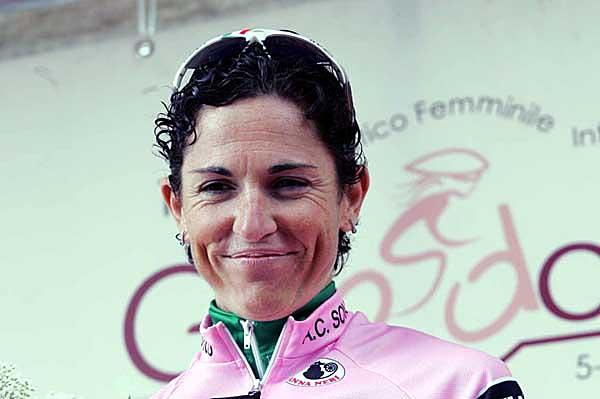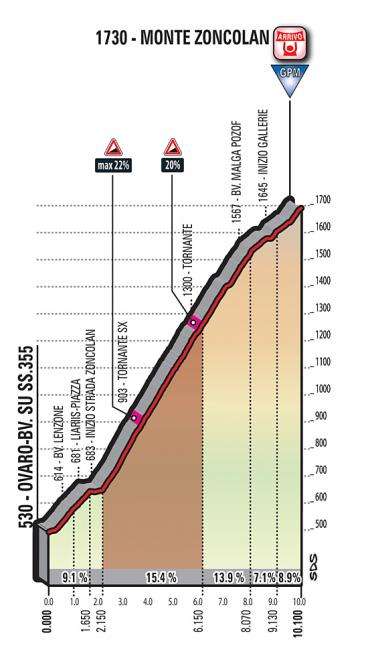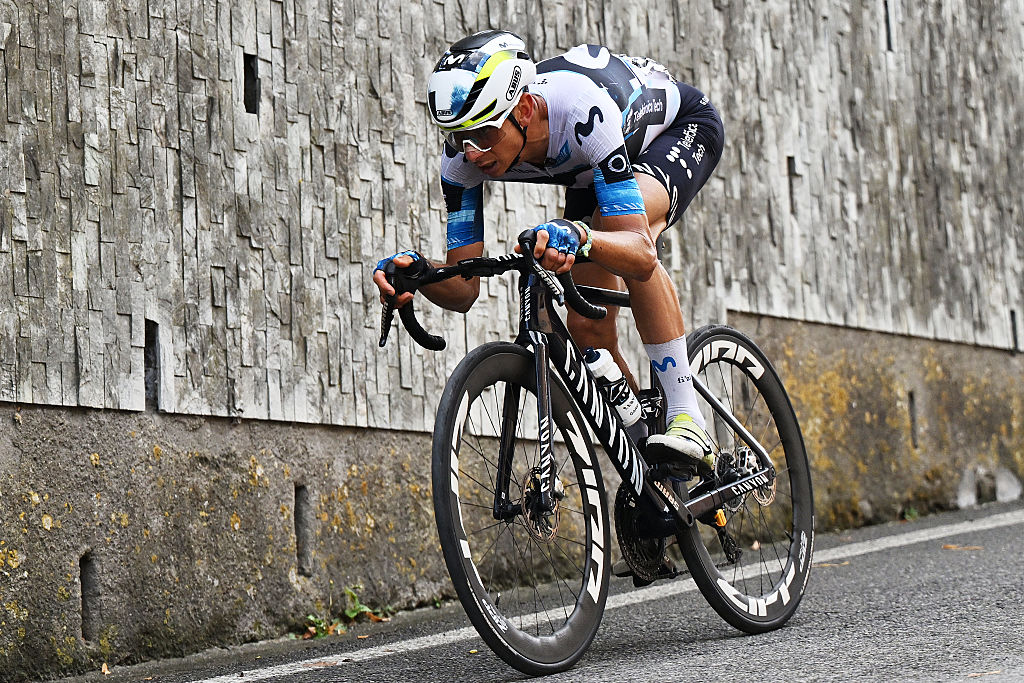Giro Rosa countdown: Luperini looks back at victory on the mighty Zoncolan
Five-time champion says riders feared the climb
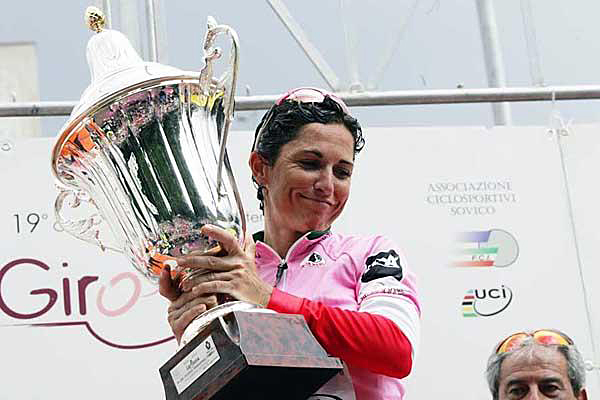
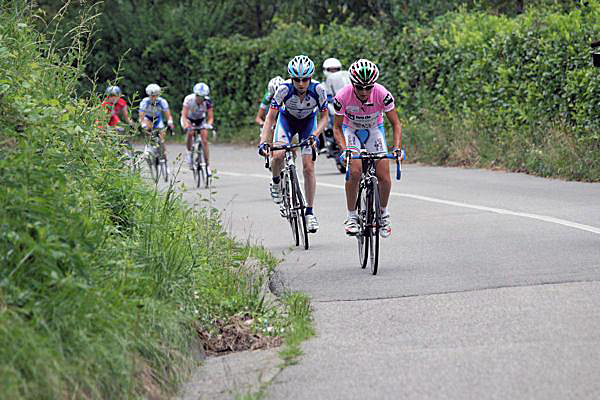
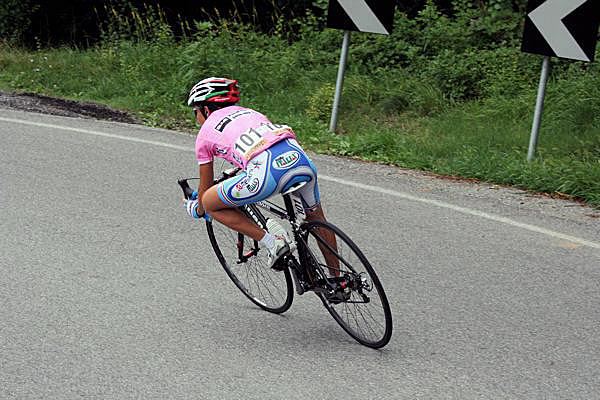
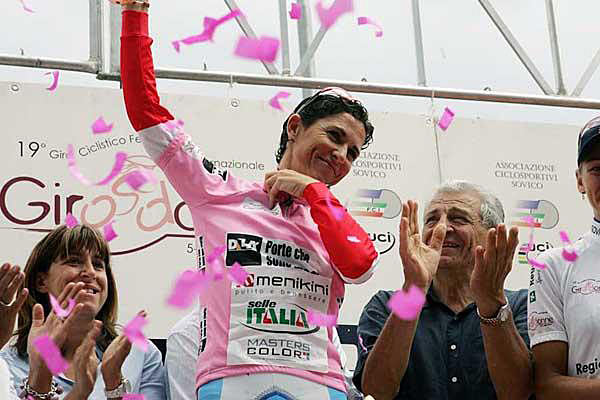
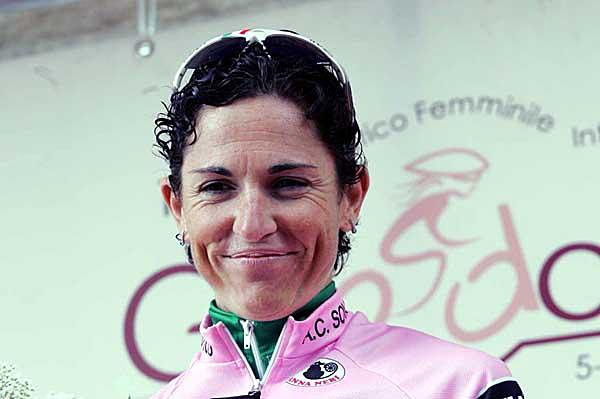
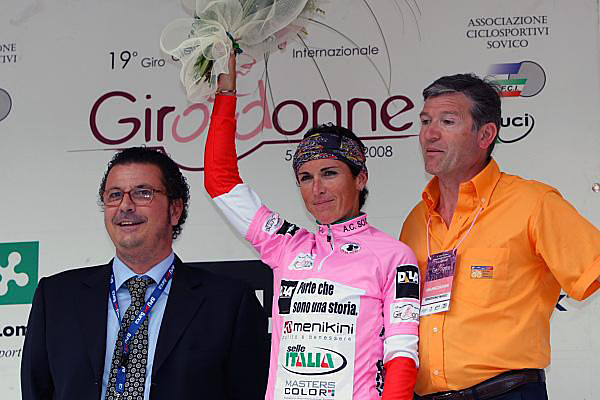
Italy's Monte Zoncolan is one of the toughest mountain passes in professional cycling, arguably ranked above the Mortirolo, Gavia and Stelvio, and often compared to Spain's Alto de l'Angliru. Given its dominant stature in the sport, however, the mountain has only been included a handful of times in the long-running history of the Giro d'Italia. It has been used six times in the men's Grand Tour, most recently won on by Chris Froome in May.
Monte Zoncolan features in 2018 Giro Rosa
Van der Breggen to skip Giro Rosa defense
Van der Breggen: I need a change, I want a change
Giro Rosa countdown: Five riders to watch
Giro Rosa countdown: 'I am aiming for Giro Rosa victory' says Van Vleuten
Giro Rosa countdown: Everything doesn't hinge on one rider, says Guarnier
However, the climb was first introduced in the women's Giro d'Italia Internazionale Femminile, also known as the Giro Rosa, back in 1997 and so there can only ever be one inaugural champion of the Zoncolan, and that is Fabiana Luperini.
Now retired from a successful career that spanned two decades, Luperini now helps run a family-owned agriturismo business. She spoke to Cyclingnews from her home in Pontedera, near Pisa in the Tuscany region of Italy, about that famed inaugural win on the Zoncolan that led to her third of a record of five Giro Rosa victories.
"I remember that year well, particularly because there was a lot of fear of a climb like the Zoncolan. But, we were used to those kinds of climbs because they were often included in both in the Giro, and especially during the Tour [Grande Boucle Féminine Internationale -ed]."
The Monte Zoncolan is located in the Carnic Alps in the Friuli region. At its highest point, the mountain hits 5,740ft (1,750m), and the roads that venture up its steepest west side from Ovaro travel roughly 10km, with an average slope of just under 12 per cent and pitches as steep as 22 per cent, and it reaches an elevation gain of approximately 4,000ft (1,220m). It is regarded as one of the most spectacular climbs for its scenery and ability to host thousands of tifosi along its roadsides.
At first, organisers used a less challenging side of the Zoncolan from Sutrio from the east side of the mountain, and then later introduced the steeper west side. The list of winners, in either case, is short at only six. After Luperini, it was Gilberto Simoni, who won twice; in 2003 from Sutrio and 2007 from Ovaro, and then Ivan Basso (2010), Igor Anton (2011), Michael Rogers (2014) and this year Froome, who all won from the more challenging side of the mountain.
Luperini's victory on the Zoncolan came during the finale of stage 10 of the Giro Rosa, the climb started in Sutrio and finished partway up, stopping at the chairlifts. She soloed to victory on the climb and won her third consecutive overall title.
The latest race content, interviews, features, reviews and expert buying guides, direct to your inbox!
"I remember that I had a teammate in a breakaway with other riders who started the Zoncolan in front of me. I remember we rode up a different side and finished at a lower point than where this year's Giro d'Italia finished [stage 14 and won by Chris Froome - ed.].
"It's was still tough, and it was a demanding climb, where everyone had to stay at their own pace; otherwise you would risk being attacked.
"My teammates took me to the front before the base of the climb, and I was able to hold a strong pace, and so ended up alone. Even though I already had the pink jersey, I wanted to accumulate as much time as possible."
Luperini won the overall title that year ahead of Canada's Linda Jackson and Lithuania's Edita Pucinskaite, who went on to win two titles in 2006 and 2007.
She officially retired from pro bike racing in 2013 as one of the most decorated cyclists to come out of Italian cycling. Her long list of accolades includes three overall titles between 1995-97 at the now folded Tour Cycliste Féminine, which was primarily considered as the women's Tour de France and more informally known as the Grande Boucle Féminine Internationale, a event she insisted was the hardest women's stage race in the world at the time.
Luperini won her five Giro Rosa titles between 1995-98 and 2008, out-numbering the three titles later won by Marianne Vos, and the two titles each won by Joane Somarriba from Spain, Swiss climber Nicole Brändli, Lithuania's Edita Pucinskaite, American Mara Abbott and defending champion Anna van der Breggen.
She says that her five titles are accomplishments that still resonate well with her because of their sheer difficulty, but that there are no secrets to such successes.
"To win the Giro five times is a difficult task," Luperini said. "When I think about it now, it seems so hard, but the secret was all about training, staying humble, and continuing to train as if I had never won at all."
A 20-year wait for the return of Monte Zoncolan
This year's route is hard. It will start on July 6 in Verbania and cover nearly 1,000km during the 10 days of racing across Northern Italy, before concluding in Cividale del Friuli on July 15. In addition to a new mountain time trial, it will see the return to Monte Zoncolan for the first time since Luperini won on it more than 20 years ago. Cyclingnews has put together a full race preview with additional details.
Organisers announced last December that they intended to bring back the climb as part of the women's parcours, which will be the final summit of the penultimate stage 9, only this time, the women will take on the steeper west side from Ovaro.
The climb is just over 10km and starts out at a shallow grade but kicks up at roughly the 8.5km-to-go mark, in the village of Liariis. The next four kilometres average 15 per cent, which includes its steepest sections at 22 per cent with six kilometres to go and 20 per cent with four kilometres to go. Riders climb through three successive tunnels, and they will know that they are near the end when they reach a series of switchbacks along the last steep pitches between eight and 13 per cent that lead to the summit finish line.
Giuseppe Rivolta, who has been the director of the Giro Rosa since 2002, told Cyclingnews that he collaborated with organisers of the Giro d'Italia, particularly with President of the Stage Committee of Friuli Enzo Cainero to host the same finishes on the Zoncolan for both men's and women's events in 2018.
"It has always been important for us to include the toughest climbs that Italy has to offer in our women's race," Rivolta said. "Everyone wants to be in the big mountains during the Giro Rosa, like the men of the Giro d'Italia are, because it's the best and most prestigious race for women in the world.
"The Monte Zoncolan is a particular climb, and we wanted to try introducing it to our race from the hardest side. It's one of the hardest climbs in Europe - more than the Mortirolo and more than the Angliru in Spain. It's very difficult."
In May, Froome added his name to the list of riders to win on the Zoncolan after he attacked a select group of climbers with four kilometres to the summit and held off a chase from maglia rosa Simon Yates (Mitchelton-Scott) to win stage 14 of the Giro d'Italia. He went on to take a long-range-solo win on stage 19 to the summit of Bardonecchia that all but sealed his overall victory ahead of the parade into Rome.
Luperini said she watched the Giro d'Italia on television and seeing Froome win on the Zoncolan brought back memories of her victory.
"I saw Chris Froome' s victory, and for a moment I was proud of my career as a cyclist," Luperini said. "I think the Zoncolan has become a symbol of cycling because true cycling happens on the climbs.
"To win on a climb like the Monte Zoncolan is a great thing, so I feel proud of my victory there."
Athletes and fans have praised the organisers for carefully selecting the most challenging and unpredictable routes each year, and because they have often added iconic ascents as the Mortirolo and Stelvio passes. This year's trip up Monte Zoncolan will undoubtedly play a significant role in the overall outcome of the Giro Rosa.
"We created this assignment, together with the Giro d'Italia, to show that both fields are capable of racing the hardest climb and that there is no difference between the men's field and the women's field on the big, iconic climbs like the Stelvio, Mortirolo or the Zoncolan," Rivolta said.
This year's race will start with a team time trial in Verbania without the overall defending champion Anna van der Breggen, who decided that after racing in 10 editions she would instead race the mountain bike World Cup in Val di Sole. Her absence, along with the addition of the Zoncolan, means the race for the overall title will be as exciting and unpredictable as ever.
"It will be a big, big show," Rivolta said. "We expect a lot of crowds, people and supporters because the women need all the support from their fans. Not only for the Zoncolan stage, but for every stage. We invited people to come and see this race and to show their support for our women's field."
Although organisers have not yet confirmed an official start list, this year's field will include 24 teams, and an expected 168 riders who will be vying for stage wins, intermediate classifications in the sprints and mountains, and the overall title.
Cyclingnews chose five riders to watch that include last year's runner-up Elisa Longo Borghini (Wiggle High5), third-placed Annemiek van Vleuten (Mitchelton-Scott), Kasia Niewiadoma (Canyon-SRAM), Ashleigh Moolman-Pasio (Cervelo Bigla) and 2016 winner Megan Guarnier (Boels Dolmans).
Asked if she had any words of wisdom to give to the overall contenders at this year's Giro Rosa, particularly when it comes to stage 9 and the Monte Zoncolan, Luperini said, "listen to your heart and your legs and focus on yourself instead of looking at your opponents.
"And believe in the possibility of winning."

Kirsten Frattini has been the Editor of Cyclingnews since December 2025, overseeing editorial operations and output across the brand and delivering quality, engaging content.
She manages global budgets, racing & events, production scheduling, and contributor commissions, collaborating across content sections and teams in the UK, Europe, North America, and Australia to ensure audience and subscription growth across the brand.
Kirsten has a background in Kinesiology and Health Science. She has been involved in cycling from the community and grassroots level to professional cycling's biggest races, reporting on the WorldTour, Spring Classics, Tours de France, World Championships and Olympic Games.
